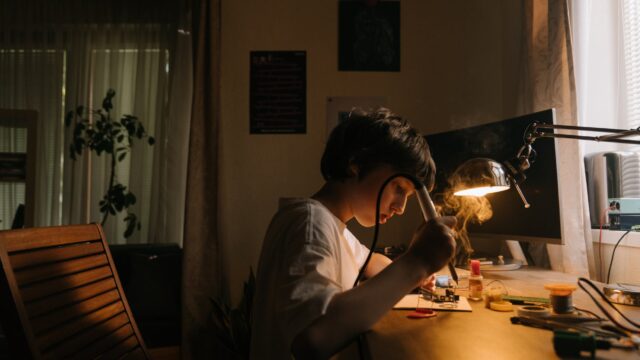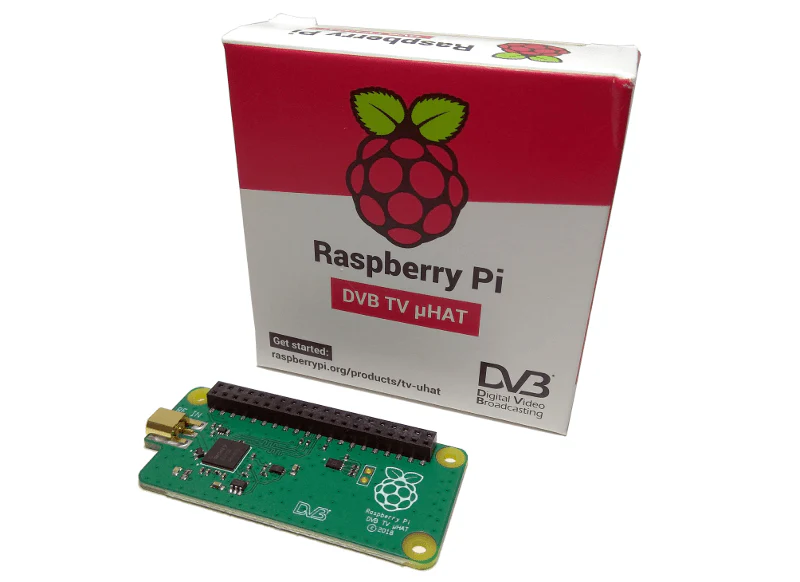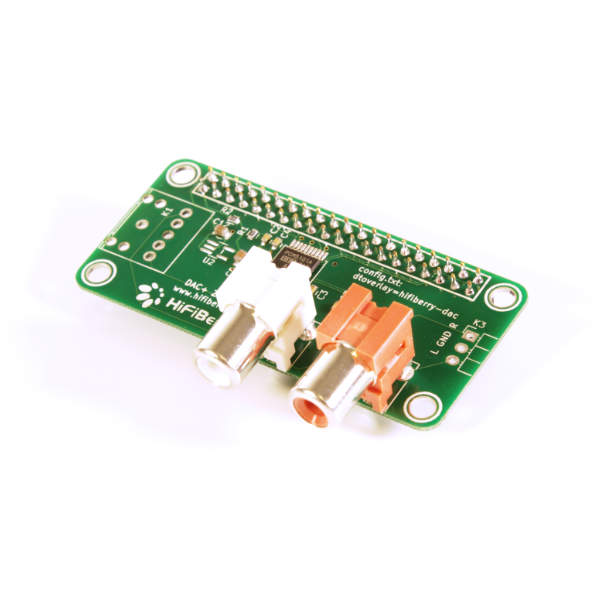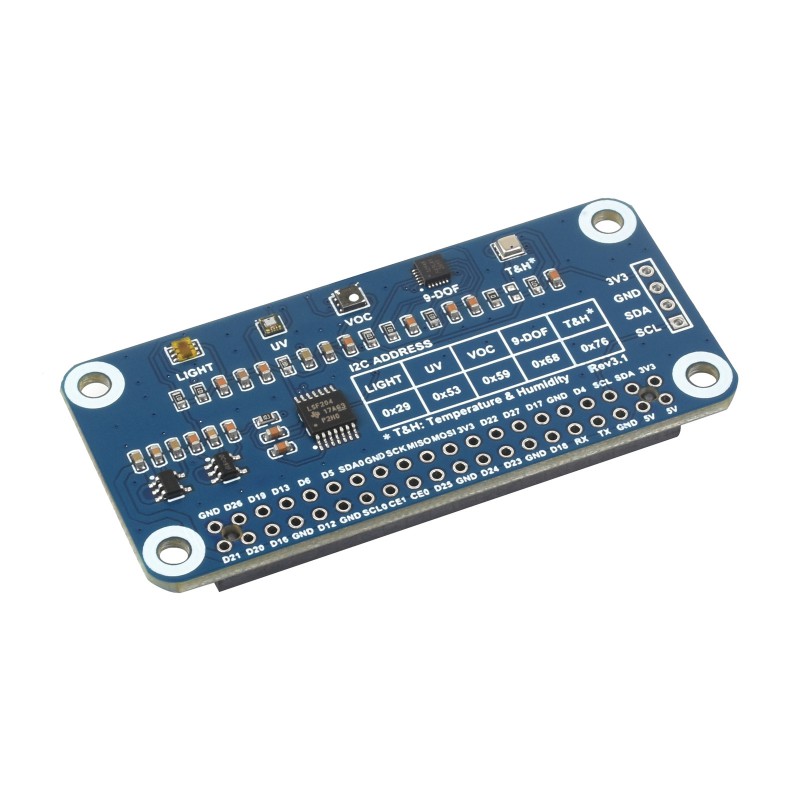10 Micro-electronics Projects that Aren't Robotics
If you or your kid can't muster up excitement about robotics, go take a peek at these 10 projects, none of which have anything at all to do with robotics.

There’s more to educational/hobby micro-electronics than building robots.
If you or your kid can’t muster up excitement about robotics, go take a peek at these 10 projects. I’ve included a variety of different projects that do different things, run on different platforms, require different knowledge levels, and have different price points. Some of them also include the opportunity to learn about enclosure fabrication.
1. The Pimoroni Grow

Grow HAT Mini (HAT only)
A Raspberry Pi mini HAT designed to help you take care of your plants. It can tell you how well they’re hydrated, attract your attention when they need water and, if you want to go a step further, even give them water!
This handy widget is a Raspberry Pi “HAT” (that stands for “Hardware-On-Top”). It connects to a Raspberry Pi’s GPIO pins, and is compatible with any Raspberry Pi model that has 40 GPIO pins (so, not the very earliest Pis). It is easy to connect to a Raspberry Pi – you just (carefully) plug it in so that all 40 pins are seated in the Grow’s GPIO socket. You can separate the two boards later if you need to.
The Grow uses connected capacitive touch sensors on custom-designed plant marker sticks to detect the moisture level in potted plant soil, and then gives a visual indication of moisture level for up to 3 sensors.
2. SparkFun OBD-II UART board

SparkFun OBD-II UART
This board allows you to interface with your car’s OBD-II bus. It provides you a serial interface using the ELM327 command set and supports all major OBD-I
Learn how to read vehicle diagnostics over a serial connection. Those with more experience in micro-electronics should be able to, for example, create a portable version that runs on an Arduino or Raspberry Pi, features a screen and selection options, is rechargeable, and has a custom enclosure.
3. PiHut RasPi TV HAT

Raspberry Pi TV HAT
The Raspberry Pi TV HAT is a DVB-T2 Digital TV receiver add on for the Raspberry Pi, compatible with the Raspberry Pi 3 Model B+ or Raspberry Pi Zero W (and older Raspberry Pi 2 & 3 models) The Raspberry Pi TV HAT allows you to receive digital terrestrial TV broadcast systems which includes DVB…
Feed digital OTA (broadcast) TV into this board while it’s plugged into a Raspberry Pi and you can stream broadcast TV to other devices on your network.
4. MagTag Pet Feeding Clock

MagTag Cat Fed Clock
Keep track of the current time + when you last fed your favorite pet with this connected Eink clock.
Does your pet tell lies about not having been fed yet? This project is for you!
You can easily program this lightweight smart display to update the date and time your pet was last fed by pushing the left-most button. While it’s not included in the tutorial, a more advanced version of this would give you the ability to track most-recent mealtimes for up to 4 pets (or food plus 3 different medications).
5. Pwnagotchi WiFi Pentester

Build a Pwnagotchi WiFi penetration tester with Pi Zero and a PaPiRus display • Pi Supply Maker Zone
Build a Pwnagotchi WiFi penetration tester with Pi Zero and a PaPiRus display Pwnagotchi is an A2C-based “AI” powered by bettercap that learns from its surrounding WiFi environment in order to maximize the crackable WPA key material it captures (either through passive sniffing or by performing deaut…
Test your home network’s wireless security.
Reminder: hack responsibly.
6. Digital-to-Analog Audio Conversion

HiFiBerry DAC+ Zero | HiFiBerry
This is our smallest board in the Raspberry Pi Zero form factor. It can be used not only with the Raspberry Pi Zero, but also with the bigger Raspberry Pi B+/2 and 3. Note that for the Raspberry PI zero, you need to solder a 40-pin male header to the board. This header isn’t included, but you can or…
Have you found a nice pair of old analog speakers at a yard sale? Give them new life with a Raspberry Pi HAT from HiFiBerry.
While you’re at it, you can use the same Raspberry Pi board to also host a local streaming music server using Jellyfin. Note that you will need to have music files stored locally.
7. Environment Sensor HAT

Environment Sensor HAT For Raspberry Pi, I2C Bus
Environment Sensor HAT For Raspberry Pi, I2C Bus (Store link, no affiliation)
There’s no specific project tutorial link for this one, but similar tutorials are available, and part of the lesson can be adapting to using different hardware. This HAT would be great for an offline local weather conditions display. It even has onboard motion sensing for those of you who live in places where earthquakes are frequent. For even more experienced programmers, how about including weather prediction by data analysis?
9. Binary Clock Soldering Kit

24 Hour Binary Clock With Bamboo Case
24 Hour Binary Clock With Bamboo Case: Assembly Instructions for 24-Hour Binary Clock Kit. Buy a kit
This Binary Clock project is a soldering kit that also presents an opportunity to custom fabricate a case. It comes with a printed circuit board, board components, and a pre-programmed IC, so no programming skills are needed for this one.
10. E-Paper Badge

Pi E-Ink Name Badge
Pi E-Ink Name Badge: Want to decorate your chest with something amazingly dorky? Want to stand out in a crowd? How about earn some serious geek cred, and the wonderment of your peers? HAVE I GOT THE THING FOR YOU! Introducing the Pi E-Ink Name Badge – a Raspberry Pi Zero P…
Show your name (or whatever else you want) on a small e-paper display you can wear. You can add magnets to the back to attach it to your shirt or connect it to a badge lanyard (tip: make that easier by adding a bezel-type frame with lanyard loops).
Where to Next?
Once you learn the basic concepts of connecting peripherals and programming logic, you can take disparate components and make something completely new! There are quite a few hobby electronics suppliers out there these days, with lots of platform and form-factor options (we didn’t even get into soft circuits, which are electronics built into clothing using conductive thread and sew-on components!). Browse those tutorial sections, follow makers on Twitter, and maybe even write a tutorial of your own!
 Cordelya Sharpe
Cordelya Sharpe